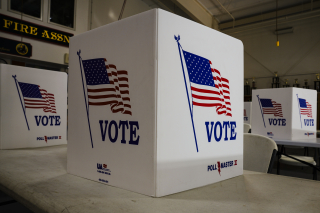Republicans are united like never before. As President Trump and the Republican Congress rapidly enact an America First agenda to rebuild our country, many are already looking to the future.
With presidential term limits and the Democrats in disarray, the 2028 primaries will be a wide-open contest. Maintaining Republican leadership will be critical in preserving policy victories and continuing the vital work of saving our country.
Who will hold our Republican majority together?
Vice President J.D. Vance is a likely front-runner, but his nomination is far from certain. Trump Cabinet member Marco Rubio is another contender, along with Republican governors like Glenn Youngkin, Brian Kemp, or even Ron DeSantis.
The size and diversity of the field should be an asset, but under our current election rules, it becomes a liability. Candidates end up splitting the vote, and so-called “long shots” are dismissed as spoilers rather than being valued for their ideas. Voters, worried about “wasting” their vote on anyone but a frontrunner, often defer to political pundits rather than voting their conscience. As a result, instead of rallying behind a consensus nominee with enthusiasm, we are left feeling divided and disillusioned.
Our process should reflect our conservative principles: allowing candidates to compete in the marketplace of ideas, where the strongest choice naturally rises to the top and unites the base. Fortunately, there is a straightforward solution—one that Republicans have successfully leveraged before.
In primaries, ranked choice voting (RCV) offers the best path to uniting behind the strongest candidate to defeat the Democrats. It’s a practical, common-sense solution that empowers voters whenever a race has more than two candidates.
This concept is far from new. Robert’s Rules of Order—the 150-year-old cornerstone of parliamentary procedure—outlines this very process, which has long been used by political parties and organizations nationwide.
RCV lets voters rank candidates in order of preference—1, 2, 3. If their top choice is eliminated, their vote moves to their next highest-ranked candidate who’s still in the race. This isn’t multiple voting but a series of instant runoffs. Many state parties use a similar process in conventions or caucuses, where the lowest vote-getter is dropped each round until someone wins a majority. Just like in those settings, voters in an RCV primary don’t have to rank every candidate—they have the freedom to choose how many they support.
This isn’t just a theory—it’s already in practice. Seven states—Alabama, Arkansas, Georgia, Illinois, Louisiana, Mississippi, and South Carolina—use ranked ballots in elections that require a majority winner. A prime example of how RCV helps Republicans navigate crowded races and secure victory is Virginia. In 2021, Glenn Youngkin, along with now-Lieutenant Governor Winsome Sears and now-Attorney General Jason Miyares, won Virginia’s first statewide Republican victories since 2009. Thanks to RCV, they emerged with a clear majority of Republican support despite competitive fields. The wins proved that the state’s blue trend was not irreversible – it is not a stretch to say that RCV helped save the Republican Party of Virginia.
One of the biggest advantages of RCV in primaries is that it eliminates the “spoiler” problem. Take Governors Youngkin or Kemp, for example—both are strong leaders from purple states who might enter the presidential race as long shots. Voters in Virginia, Georgia, and beyond may hesitate to support them, fearing their votes would be “wasted.” But with RCV, they could rank their preferred candidate first and a frontrunner second or third, ensuring their vote still matters. It’s a win-win—allowing voters to support their top choice without jeopardizing the bigger picture.
In 2024, the U.S. Virgin Islands used RCV in their presidential primary. The process grew President Trump’s vote share from 69% to 74% once votes cast for dropped out candidates like Doug Bergum or Ron DeSantis were eliminated in subsequent rounds. This result reflected the will of the voters and predicted general elections: even if a voter preferred another candidate at the start of the primary, in most cases, that voter would ultimately cast his vote for President Trump.
The flaws in our presidential nomination process are obvious—but so is a proven solution, with Virginia leading the way. If Republican state parties adopt RCV, they can welcome a diverse field of candidates while ensuring the party unites behind the strongest consensus choice.
Whether anyone can replicate what President Trump achieved—uniting the Republican Party and the country while driving the bold changes America needs—remains to be seen. But one thing is clear: Republicans should give themselves the best possible chance to nominate the strongest candidate in 2028.
Ryan Costello is a former U.S. representative from Pennsylvania.He served on the Transportation and Infrastructure Committee and was vice chair of the Aviation Subcommittee.





